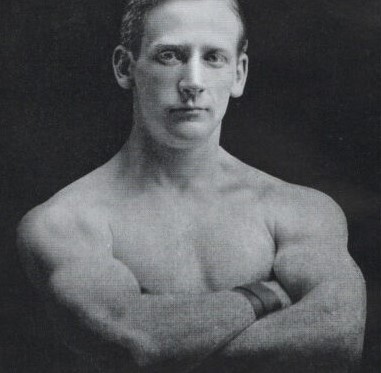A man who is said to have ‘revolutionised the world of weightlifting, has been nominated for a Blue Plaque.
Londer, William Albert Pullum, was born in Camberwell on April 8, 1887. As a child, he suffered several serious illnesses – including meningitis, pulmonary tuberculosis, peritonitis and tubercular disease of the lower jaw.
He even wrote in his 1926 book, ‘Weightlifting Made Easy and Interesting’, that an ‘early grave’ was on the cards for him. With that in mind, it makes what he went on to achieve even more impressive.
The beginning of his entry into weightlifting can be dated back to 1904 after he saw the Arthur Saxon Trio perform their act of extreme strength at the Camberwell Palace of Varieties. They would get audience members to compete for cash prizes and on the night he was watching, a local strongman called William Slade won the competition.
Shortly after, Mr Pullum ended up sharing a house with Slade and his brothers – when his family moved out of London. He trained weightlifters from all over the world in his Camberwell gym.
A sickly-looking teenager at the time, Slade created a training programme for him – and slowly Mr Pullum built up his strength. Getting well into Mr Pullum noticed that whilst many traditional strongmen could lift weights with ease, they did not have a proper technique.
It was this that drove him to devise a set of rules – self-tried and tested – that would become the ones the sport still abides by to this day. By nineteen years old, Mr Pullum had set up a school of physical culture in Camberwell named the Lothian Club.
In 1907, this world-famous gym was relocated to number 5 Church Street, Camberwell (now a Cheeky Burger). It became a hub for aspiring weight trainers from around the country – including the world’s richest man John Paul Getty was once trained by him.
Not only did he work behind the scenes – going on to help set up the British Amateur Weightlifting Association in 1910 – he was also a famous athlete in his own right. Between the years 1911 and 1915, he won 192 British and world weightlifting records, fifteen British championships and 53 gold medals.
He would later coach the 1948 British Olympic Team, long after having retired from competing himself – proving how integral he was to the sport. In 1920, Pullum even patented a new design for barbells.
While he took his competitive weightlifting seriously, he was not above performing more theatrical displays of strength. One famous stunt involved him supporting nine men sitting on a wooden plank and three more seated on a barbell.
He was under nine stone at the time and was supporting over 2000 lbs. During the First World War, Pullum’s request to enlist was refused but rather he was employed as a physical training instructor, tasked with bringing those who failed the physical tests up to the required standard.
Even throughout the war, he continued to break records but saw no active military service. After hostilities ended, Pullum’s gym continued to flourish and attracted many weightlifters, boxers, wrestlers, and the occasional millionaire, all eager to be trained by him.
He had married Alice Sophia Howe in 1910 and went on to have one son, William Stanley Pullum who went on to be a professional boxer, trainer and promoter. William Pullum died on August 29, 1960, aged 73 and was buried at Camberwell New Cemetery.
The inscription on his gravestone reads: “During his lifetime a pillar of strength and an inspiration to his many friends throughout the world.” Geoff Platt, a lifelong friend of the Pullum family and who knew him personally in the weightlifting world, said: “I was the auditor of the International Weightlifting Federation number three in the world in charge of weightlifting 1991-1995.”
“William Pullum was a very intelligent man who was treated very well. His rules and techniques have stood the test of time.”












